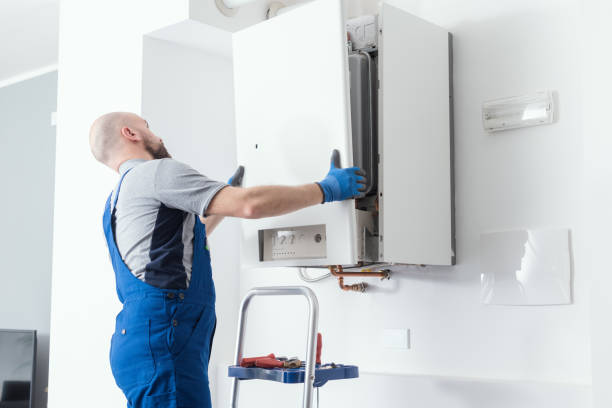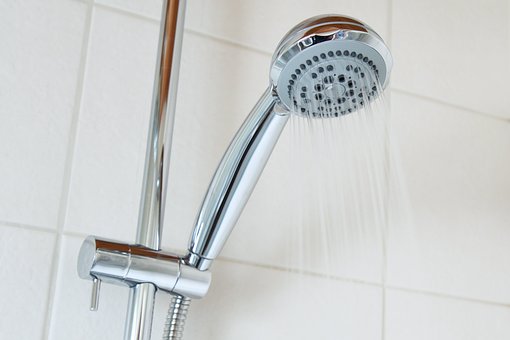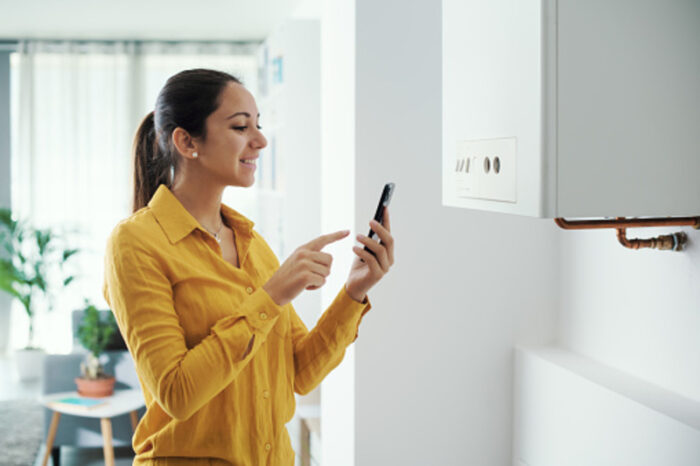According to statistics, the average four-person household in the United States uses over sixty gallons of hot water daily. Therefore, it’s paramount for every homeowner to invest in a good water heating system.
Fortunately, there’s no shortage of reputable water heater manufacturers out there. You only need to perform some due diligence to ensure you’re purchasing a heater whose technology is at par with your home’s electrical wiring systems. It’s also best to use equipment whose functional capacity matches your household’s daily hot water needs.
However, investing in a quality water heater is only half the task. The other half entails properly installing the system into your home. A little oversight and things could go wrong.
If you’ve just invested in a water heater and are wondering how to self-install the equipment, this article is for you. We’ve prepared a comprehensive water heater installation guide focusing on gas-powered heaters. But first things first.
Should You Self-install Your Water Heater?
Experts strongly discourage installing a water heating system by yourself. Unless you have sufficient knowledge in this area, it’s always best to contact your local water heater technician and have them take care of the whole process.
Also, for clarity’s sake, it’s worth noting that the term ‘self-installation’ as used in this context doesn’t target the ordinary homeowner. Instead, it’s intended for trained technicians or people who’re considerably versed in the intricacies of water heater installation.
Common Water Heater Installation Mistakes to Avoid
There are several rookie water heater installation mistakes to avoid when setting up the system. The most common of these is picking the wrong equipment size.
Note that water heaters vary in size based on the scope of their intended usage. This size is typically measured in gallons. Standard heaters range from 30 to 80 gallons. As a general rule, always choose a water heater size depending on the number of people in your home.
Improper placement is another common mistake when installing a water heater. Depending on your location, there may be building codes that specify the exact spots in your home where you can install a water heater. Common areas include the attic, around the closet, and under certain floors. Be sure to familiarize yourself with these codes and abide by them when installing your water heater.
There’s also the often-compelling urge to dry-fire your water heater. This usually happens right after installation. However, the same reason you wouldn’t turn on your water dispenser with water is why you should never dry-fire your water heater. Doing so could cause irreparable damage to the equipment’s internal components.

What Could Possibly Go Wrong?
Making rookie mistakes could harm you, your other household members, and the property.
For starters, your water heater could produce inconsistent water temperatures. That’s especially if the mistake happened when setting up the thermostat.
You could also face a situation where your water heater backdrafts. Backdrafting is when the (often-harmful) gasses emitted by your water heater do not find a practical outlet. As such, they flow back to the equipment and contaminate the water or get released into your home’s atmosphere and possibly cause respiratory issues.
In more challenging situations, improper water heater installation could trigger electrical shocks, explosions, and electrocution. That’s especially if leaking water makes contact with exposed electrical wires.

A Step-by-Step Guide to Installing a Gas-powered Water Heater
- Cut off the gas supply to the water heater by turning the nearby shutoff valve quarter-way such that the handle and the pipe form a right angle.
- Shut the main water supply.
- Open the lowermost faucets to drain any remaining water from the pipes.
- Attach a garden hose to the drain valve in the water heater tank to drain any water left in the tank.
NOTE: This water may be super-hot. Therefore, avoid direct contact with it.
- Unscrew the vent shaft.
- Using a tube cutter, cut both the hot and cold water lines.
- Move the old water heater aside.
The best way to dispose of your old heater is to take it to a recycling facility.
- Use Teflon tape to wrap the threads of the new heater’s temperature and pressure relief valve, then screw the valves into the tank using a pipe wrench.
- Attach the copper discharge pipe.
- Use 6 inches (15 centimeters) of copper wires to solder your new adapters to one end of a pipe.
- Screw the new components into the cold water inlet and hot water outlets at the top of the tank.
NOTE: Depending on local regulations, you may need to add short, plastic-lined nipples to the ports. This is also a proactive measure to guard against galvanic corrosion.
- Set the new water heater in place.
- Adjust the old tubing to connect to the new one by either cutting or extending it.
- Use copper slip couplings to solder the tubing together.
- Reconnect the vent by tightly shoving the draft hood over it and then securing the hood in place using ¾-inch metal screws.
To go about this, you may need to drill the holes first. When properly reconnected, the vents should be at least 12 inches tall and vertically erect before turning at the first elbow.
- Reconnect the gas line by coating its threaded ends using the pipe joint compound.
- Using two pipe wrenches, screw the first nipple carefully into the gas valve.
- Reassemble the other nipples.
- Fill the tank by closing the drain valve and turning on the water supply at the main shutoff.
- Turn on the cold water valve next to the tank and ensure it’s always open.
- Check the heater is working correctly by turning on a nearby hot water faucet and checking the water temperature.
- Turn the rest of the valves on and manually inspect the new installation for any water leaks.
- Check for back-drafting while the system is on.
To do this, close all doors and windows in your house and wait until you hear the heater’s gas burner ignite. Wait for a minute, and then move a smoking stick around the draft hood above the heater. You know your heater is venting properly if the smoke draws into the vent pipe.

Wrap Up
Water heater installation is an intricate procedure that requires professional help. To be safe, always call a technician to have your new water heater installed. You may bear some set-up fees. But you’re assured there will be no costly rookie mistakes.


